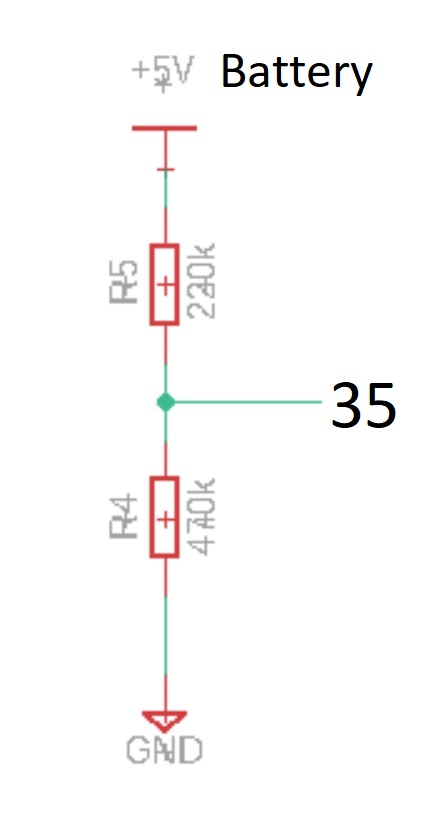Hardware¶
I’m not a hardware designer so I would recommend the following resources for more in depth information on this topic.
iSpindle based on esp8266¶
There are lots of resouces out there on how to build the hardware for an iSpindle so I will not go into details on that part. I typically use one of the excellent pcb boards that, for example the iSpindel PCB v4.0 from Cherry Philip. Here is one of my standard builds using an esp8266.

Schema for esp8266 build¶
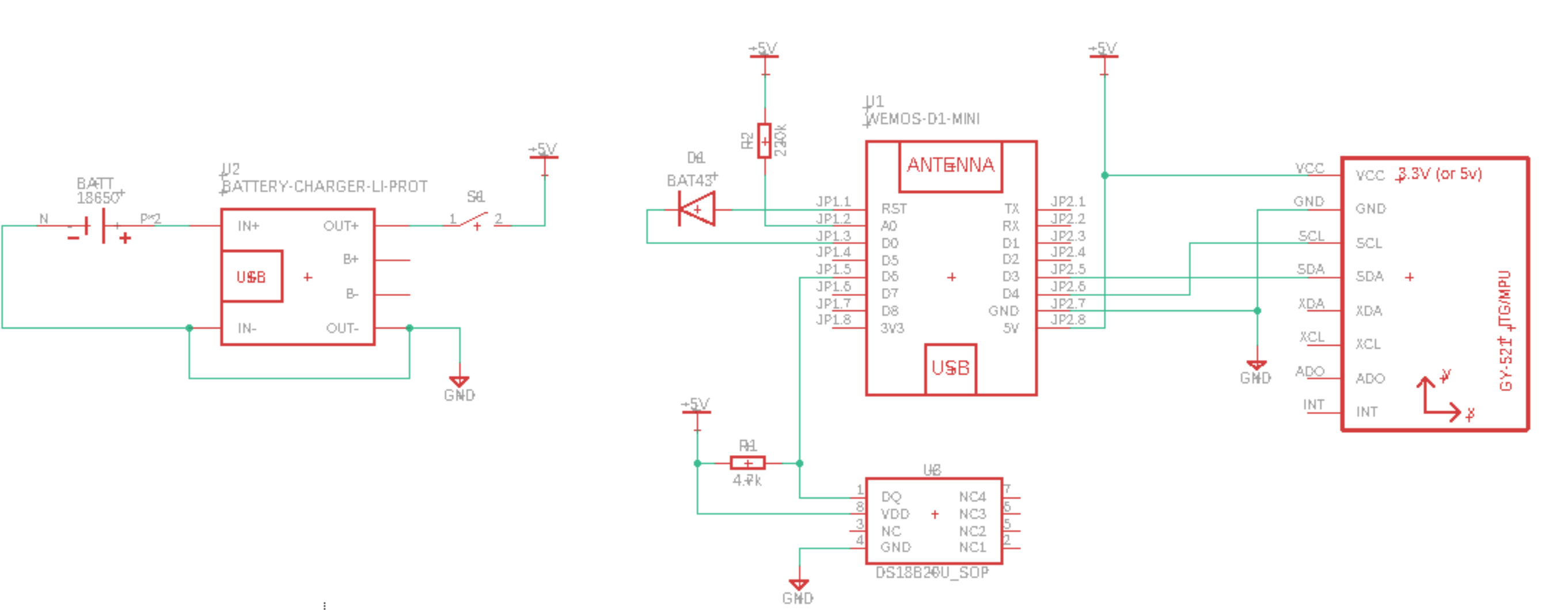
iSpindle based on esp32¶
Gravitymon supports a number of ESP32 boards that offers bluetooth support.

esp32d1 mini, this was the first board i tried which is a smaller form factor of the first generetion esp32 with 2 cores. Slow on connecting to wifi is the main downside.
esp32c3 mini, a newer version based on the latest risc v7 architecture, is seen as the replacement for the esp8266 with bluetooth support. Don’t buy v1.0 since that has a faulty wifi antenna.
esp32s2 mini, similar to the c3 board but without bluetooth support.
esp32s3 mini, similar to the s2 board but with bluetooth support.
It’s possible to use this PCB and mount an ESP32 mini on top of that (c3 or s2 are prefered). The esp32 d1 mini is a larger formfactor and can be hard to fit into the tube.
Note
You need to add a resistor between A0 (Analog PIN) and ground of 470k. The reason is that the esp8266 has a build in resistor for a voltage divider which the esp32 does not have. So in order to get a valid voltage (less than 3.2V) on the A0 pin this is needed. Once the modification is done you might need to adjust the voltage factor so the battery reading is correct.
ESP32c3 mini¶
This is model is fully supported by gravitymon.

Here is an image of where I added the resistor for the voltage divider.
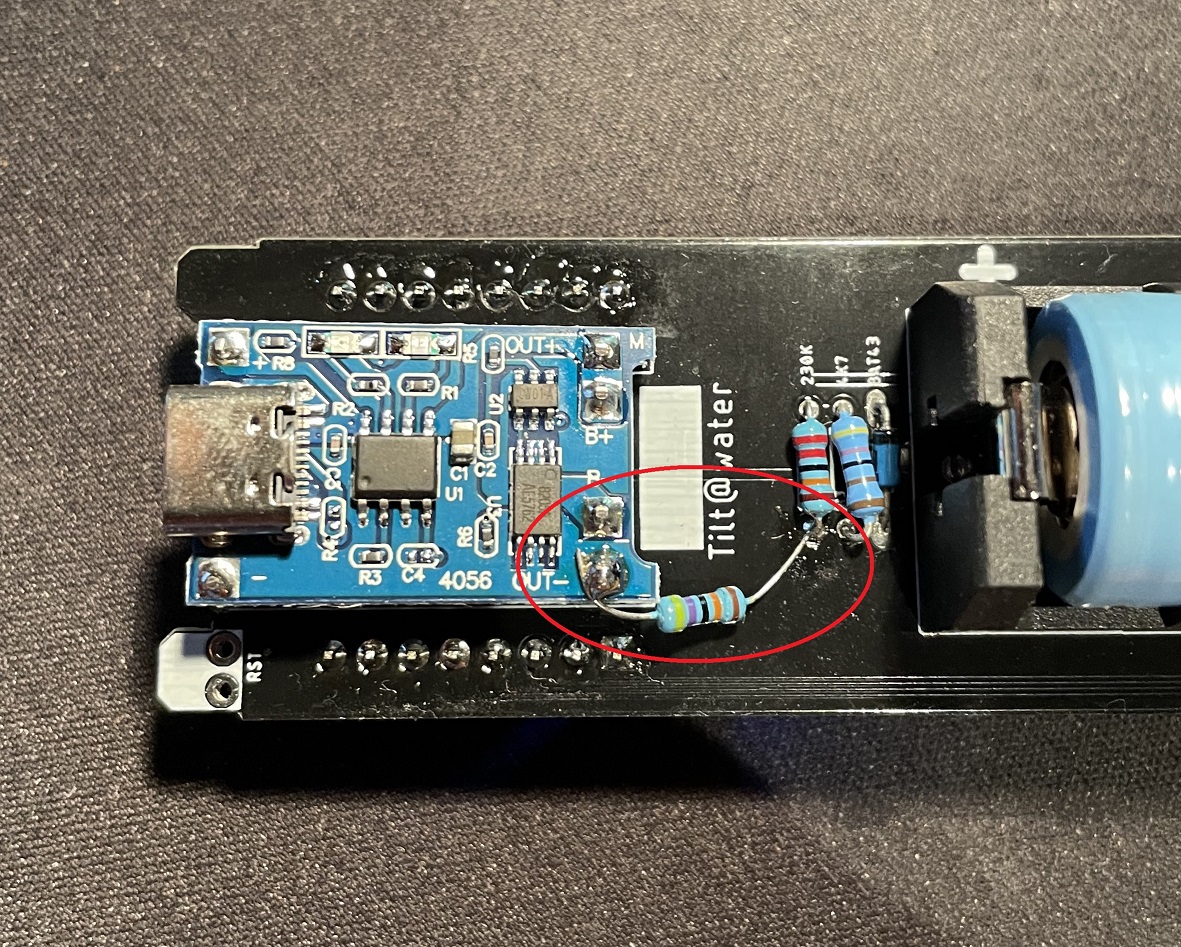
ESP32s2 mini¶
This is model is fully supported by gravitymon. Same setup as for ESP32C3 mini.
ESP32s3 mini¶
This is model is fully supported by gravitymon. Same setup as for ESP32S2 mini.
ESP32 d1 mini¶
I would suggest that you try how it fits into the PET tube before soldering it to the PCB. Make sure that the battery is attached since this will be a really tight fit.

Schema for esp32 build¶
Note
This schema assumes that an ESP32 d1 mini (pin compatible with ESP8266). The ESP32 has two rows of pins but only the inner row is used. The main difference is the added resistor R3 so we get a voltage divider for measuring battery. The ESP8266 has a built in resistor thats not visible on the schema and this acts as a voltage divider.
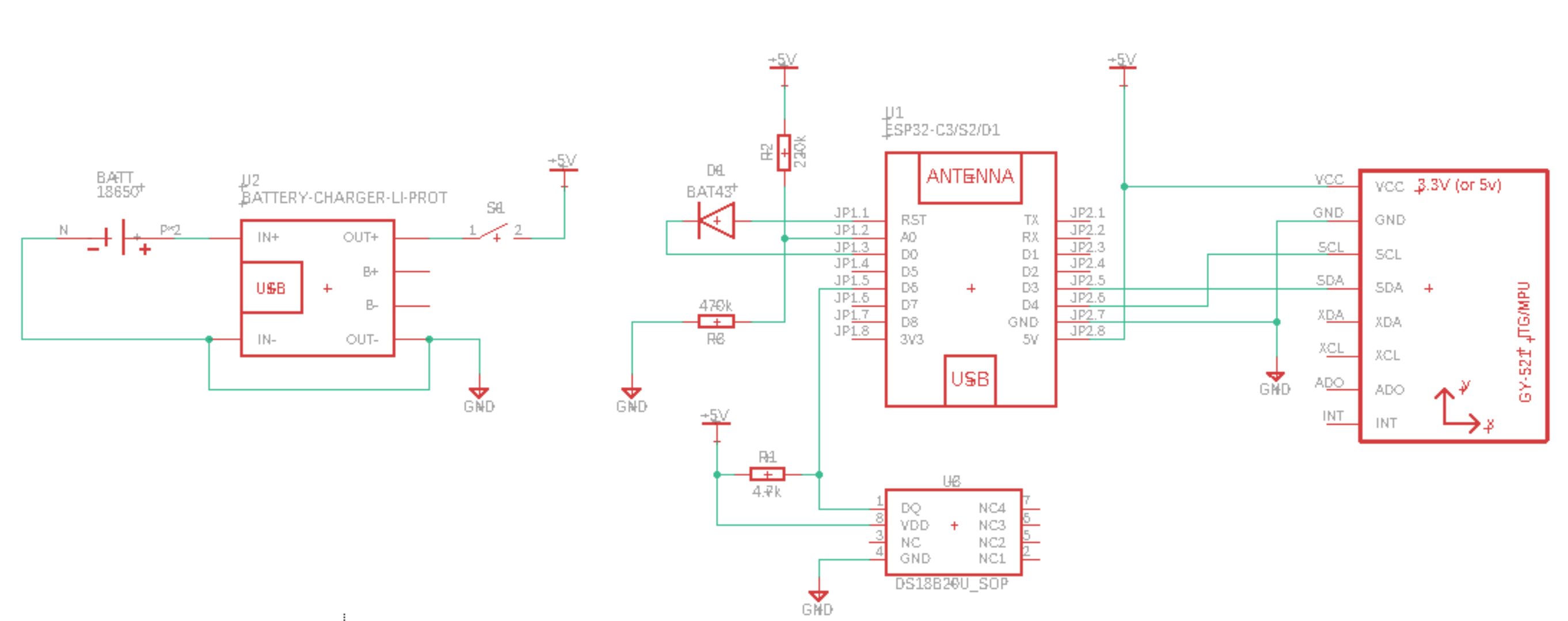
Adding a reed (magnetic) reset switch¶
A reed switch is a switch that reacts to magnetic fields. The ones I have tested are normally open and close in proximity to a magnet.
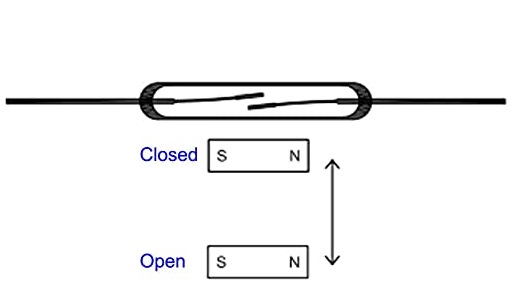
If this is connected to the reset button a magnet can be used to trigger a reset of the device. The image below shows how I mounted the iSPINDLE PCB v4.0 just under the cap. The lower red circle shows the reset connection point for the reed switch.
The reed switch is the glass tube visible under the esp8266.
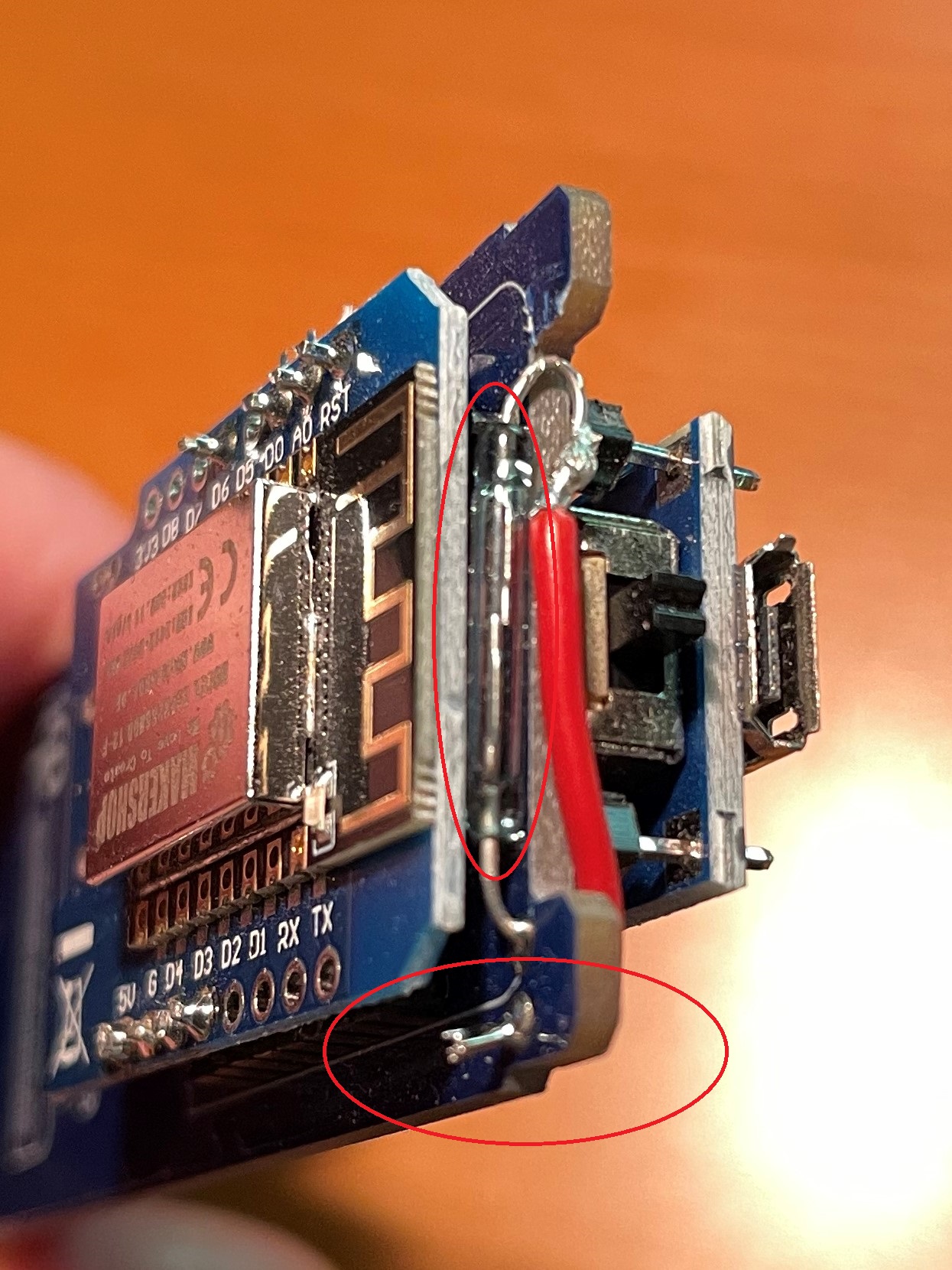
Floaty Hydrometer DIY based on esp32 lite¶
Here we have another projects that has build a device similar to the iSpindel but based on an ESP32 instead.
The setup is much simpler and attaches the GYRO to an ESP32 with a build in charger chip. GravityMon works on this hardware platform as well but there are a few limitations:
Temperature is read from the GYRO and cannot be changed. This works fine when measuring gravity but when in configuration mode the temperature will increase since it shows the chip temperature.
No possibility to measure battery level (can be added with additional hardware).
Hardware extensions¶
GravityMon has implemented a few additions to the standard iSpindel hardware. It’s possible to channel the serial console to the TX/RX pins on the chip (these position also applies to all the ESP32 chips for iSpindel). You need a USB to TTL converter for this to work. This enables you to read the serial console even when on battery (newer chips dont have a diode to remove).
Note
You need to compile the software using the -DUSE_SERIAL_PINS option to enable this feature.
Its also possible to force the device into configuration mode by connecting D7/D8 on the board during the startup sequence. This will enable the feature “gravity mode enabled during float”.
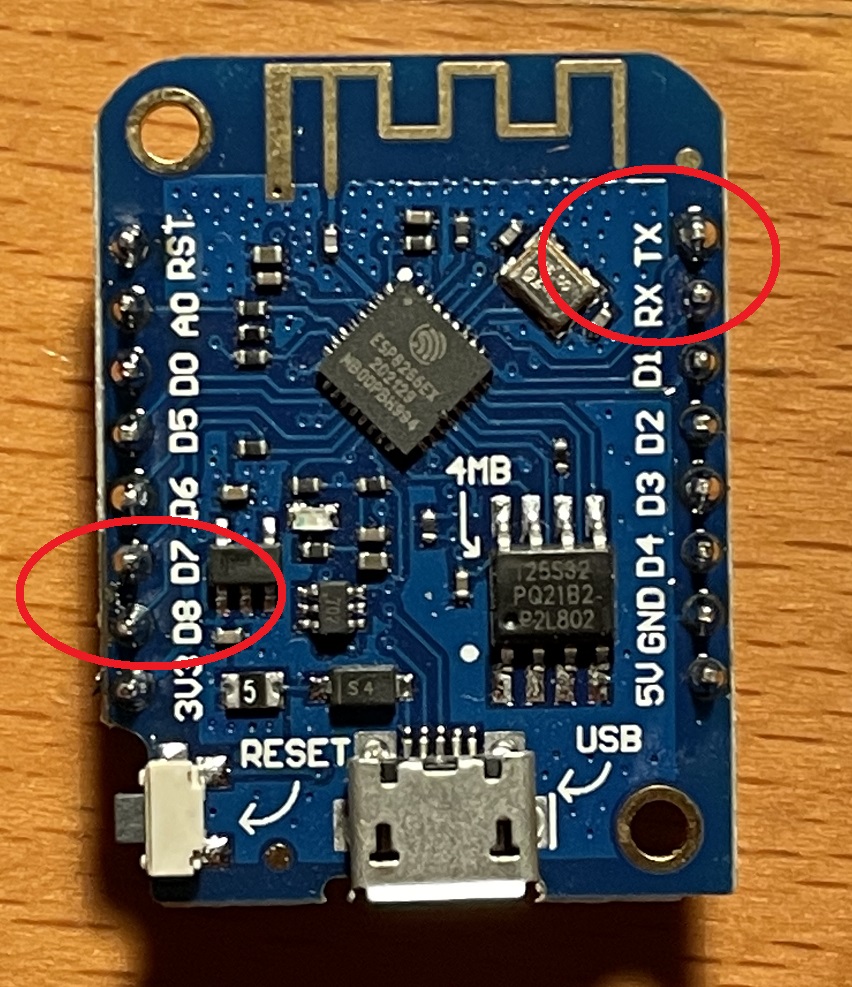
For the floaty device pins 16/17 are used as TX/RX pins and the 13/15 pins are used to force the device into configuration mode. Pin 35 can also be connected to the battery voltage via an voltage divider to be able to read the battery voltage.
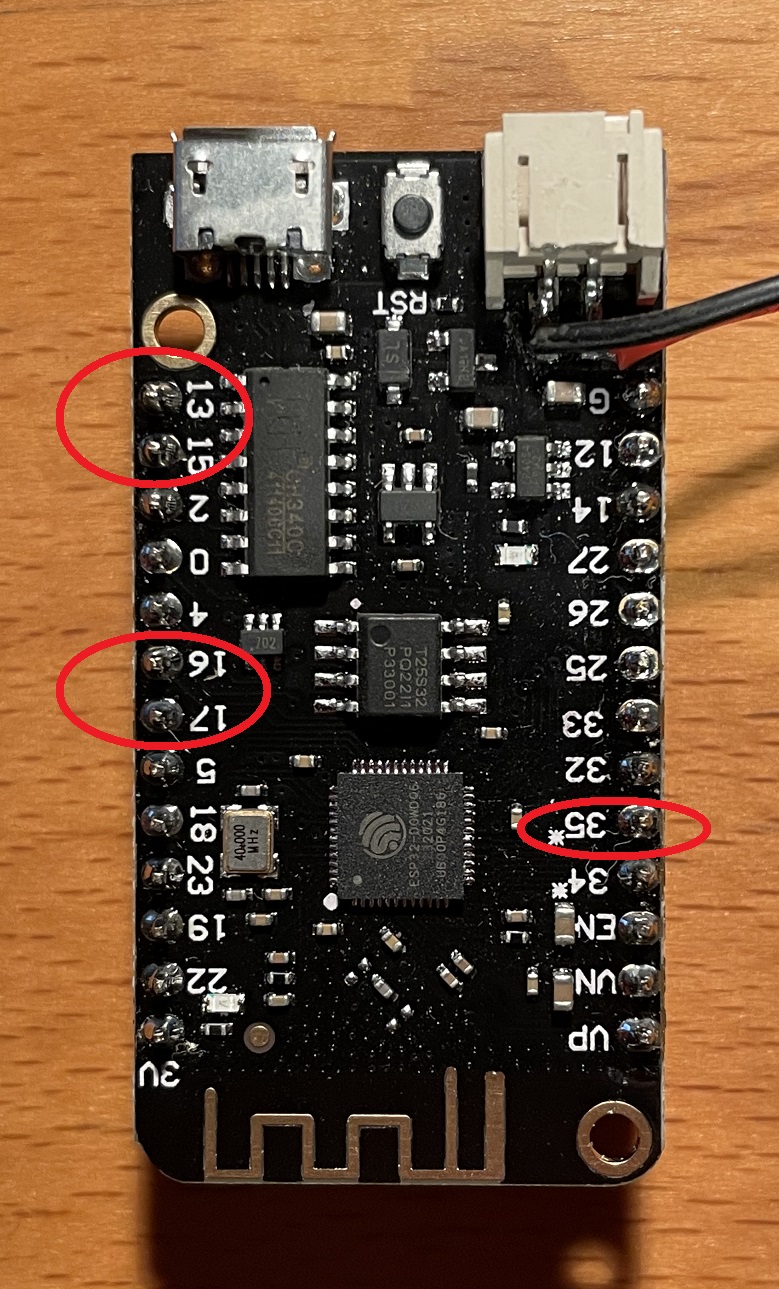
It’s possible to modify the floaty hardware and add a real voltage measurement to enable more features in GravityMon. You connect the +5V to the + on the battery and GND to ground. The connection between the resistors is connected to PIN 35 on the floaty. You might need to correct the voltage factor after the modification to ensure the calculated measurement is correct.
